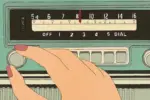For what started as a bare-bones method of keeping track of daily tasks, bullet journaling has evolved into a behemoth in the world of planning. Each month, millions of followers across YouTube, Pinterest and Instagram turn to a fresh page in their bullet journals to chronicle what their lives will look like over the next few weeks. Some honor the functional and minimalistic roots of bullet journaling, while others dedicate hours toward creating intricate lettering and colorful drawings that take on their own art form.
While praised for its aesthetics and ingenuity, the bullet journal community has its fair share of naysayers. Critics condemn the bullet journal’s frivolity and superfluity, while supporters revere its opportunity for creativity and individualism.
Regardless of its perceived value as a planning method, bullet journaling has been an organizational and artistic crutch for me. For the past two years I have discovered both freedom and structure between the pages of my bullet journal. The perfect combination of efficiency and romanticism, bullet journaling has granted me a creative release that I could excuse under the guise of productivity. I could keep track of my tasks, assignments and events throughout the school year beneath a façade of doodles and washi tape.
Then came quarantine. Students exasperated by their canceled semesters flooded the internet with memes, broadcasting the newfound uselessness of their purchased planners. But the bullet journal method, emboldened by its flexibility and diehard supporters, rose to the challenge of seemingly empty calendars and stood the test of lockdown with a persistent fervor.
So far, the worst purchase I have ever made after 94 years on this earth is a 2020 combination diary, calendar and planner.
— Bryony Burrell (@lifeofbryony) July 7, 2020
How could bullet journaling prevail when other planners failed? At the heart of bullet journaling is its adaptability. Want to take a break for a week? Just pick it up again next week, no pages wasted. Tired of a vertical layout? Draw yourself a horizontal one, or incorporate different shapes into your planning space.
When members of the bullet journaling community found themselves unmotivated and restless from their cleared schedules, they adapted. They found new ways to use their journals; they molded to the challenges and needs of this drastic new lifestyle spent stuck at home.
For some, these changes entailed self-care focused spreads. Others embraced their newly liberated time to experiment with artistic elements. Amanda Rach Lee, the widely regarded queen of bullet journaling on YouTube, adjusted her tried and true daily sections for weekly to-do lists split up into categories. Another YouTube favorite, Caitlin Da Silva, used her bullet journal to track her healthy habits, added self-reflection to her weeks and expressed moments of gratitude on a daily basis.
“This is a time where we all need to be taking a little extra care of ourselves, and one of the ways that I like to encourage more action in my life is by creating spreads in my journal,” Da Silva said in a journaling video.
The plasticity, encouragement and inspiration I received from the quarantined bullet journaling community were some of the very few reasons why I was able to keep myself together during my months at home. As someone who thrives on structure and a constant state of occupation, I surprisingly found myself leaning more heavily on my bullet journal for a sense of comfort and stability while the world around me was changing.
Instead of listing my homework assignments and upcoming meetings, I planned out “exercise,” “try a new baking recipe” and “fold laundry.” Checking off these tasks, though mundane, awarded me with feelings of productivity and accomplishment when they were all too difficult to come by.
My personal bullet journaling practices generally deviated toward a greater focus on maintaining healthy habits and checking in on my mental and physical health. I also welcomed bullet journaling as an opportunity to take creative risks, like using acrylic paint to add a sunset gradient and pasting in Kraft paper for a scrapbook feel.
While these artistic undertakings required more time to make, they were well worth the investment. There is no greater satisfaction than seeing spreads manifest from my imagination into a living, breathing document of my week’s activities and goals.
If you have been convinced to spice up your bullet journal with layouts suitable for quarantine, look no further. Here have been my go-to spreads to keep my mind and body on track for the past few months.
1. Gratitude Log
A gratitude log was a bullet journal staple long before quarantine. Logging a line of gratitude each day has been an effective way for me to stay humble and grounded in reality. It can become all too easy to fall into a hole of self-pity and despair after reading the news headlines or reminiscing on what life used to be. However, by taking a moment to appreciate what I am blessed with, I can shift my focus from what is lacking from my life and embrace a more positive outlook.
At the end of each day, I can feel simple joy at the sun still shining at 8:30 p.m. I can be more mindful of the feel of piano keys beneath my rusty fingers, or embrace my gratitude for my loving friendships after a FaceTime call. Sometimes, a mindset of gratitude is all I need to be mindful of the beauty and joy present even in the smallest of things.
2. Mood Tracker
Tracking my moods every day is a great way to check in with my emotional health, especially if I don’t have the time to write an entry about my day in an actual journal. There is a wide range of mood trackers that people use, a classic one being a page of empty boxes or shapes that can be filled in with a color assigned to a certain mood.
However, I personally found it difficult to categorize my entire day as “happy” or “sad.” To add more nuance and depth to my mood tracker, I opted to log my mood as a word or phrase for what I was feeling that day. I would then include a section at the end of my week to explain my moods, drawing meaning from what could be an event or circumstance triggering a pattern of emotions.
3. Habit Tracker
It was much easier to maintain healthy habits as a part of my unwritten daily routine during the semester. But during quarantine, dragging my body off the couch and exercising my atrophied muscles became a miserable ordeal, especially as I drew further and further away from my healthy ideal self. It therefore became critical to keep track of habits that would painfully interrupt my lazy, Netflix-filled stupor, but improve my well-being in the long run.
Tracking my habits also seamlessly meshed with my competitive nature. Each day I’d feel incomplete if I didn’t check off the box for taking my vitamins or flossing my teeth. And seeing all the filled boxes at the end of the month is gratifying, to say the least.
4. Ultimate Quarantine To-Do List
One of the primary dilemmas that individuals face during quarantine is a lack of variety. There are only so many things you can do at home, away from other people and the diverse stimuli of the outside world. But making an exhaustive list of things to do when you’re bored can be a game changer in avoiding the cursed affliction of ennui.
This list can be a compilation of activities that you might not normally think of, and can be different enough from your normal routine to draw you out of any quarantine-induced slump you might be experiencing.
Some favorites from my own to-do list include following a journaling prompt, cleaning my room and watching a film.
5. Self-Care Ideas
Despite any preventative measures you might take to nurture your body and mind, it is only natural to feel drained from a build-up of the trivialities of daily life. Having an easily accessible self-care guide in your bullet journal can be very helpful in providing actionable ways to nourish yourself when these situations inevitably arise. Whether it’s trying a face mask or doing a yoga flow, incorporating self-care into your routine can be the best way to restore peace and balance to your trying days.
Regardless of your preferred planning method, incorporating a more healthy and positive mindset into your daily life can be critical in disrupting the monotony of quarantine and paving the way for future self-reflection and growth. For those willing to take the leap of faith into the world of bullet journaling, the first step toward bettering yourself just might be tucked in the pages of a blank notebook, waiting to come alive.

















